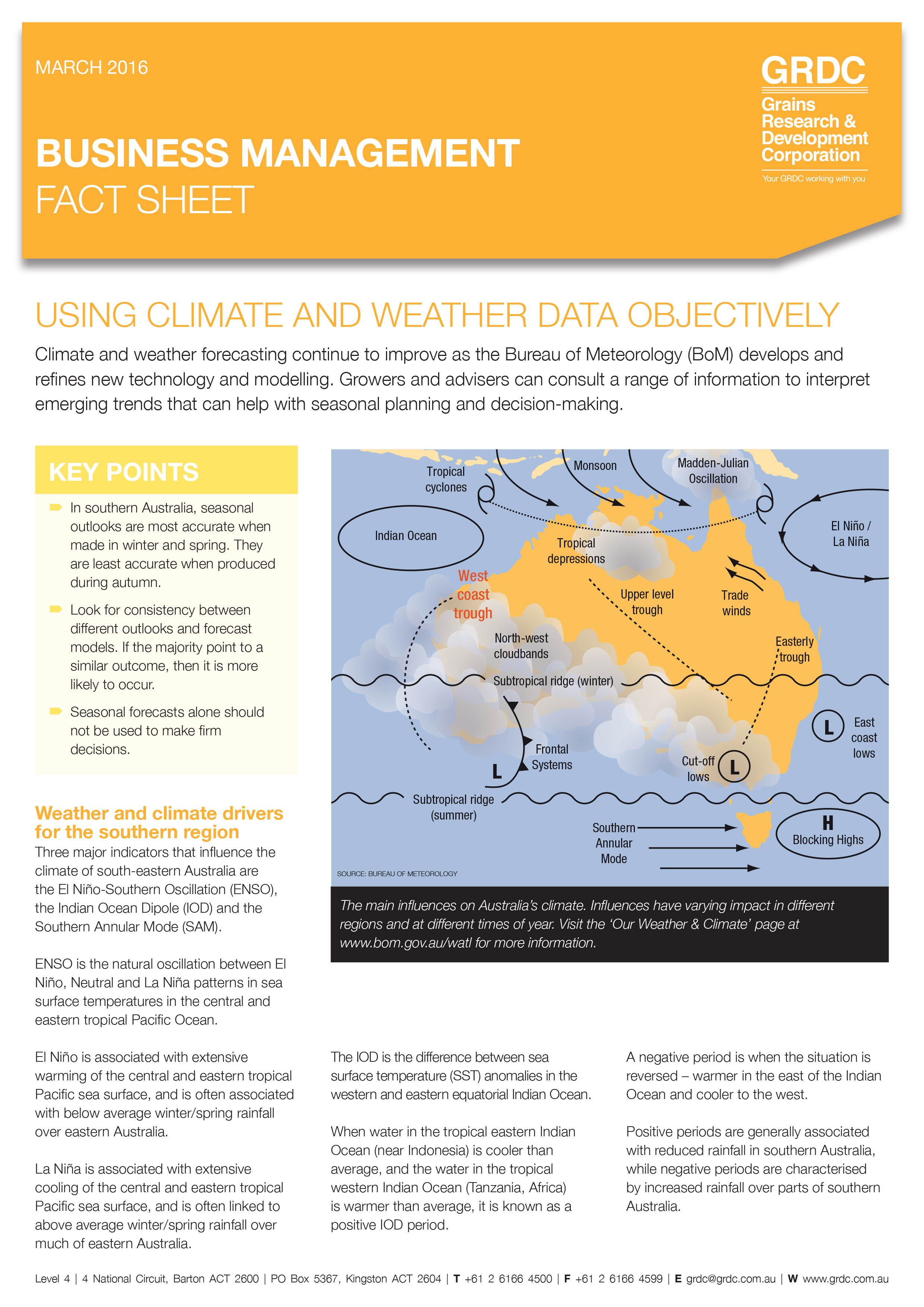Using climate and weather data objectively
Using climate and weather data objectively
Published: 1 Mar 2016

Using Climate and weather data objectively Fact Sheet cover
Climate and weather forecasting continue to improve as the Bureau of Meteorology (BoM) develops and refines new technology and modelling. Growers and advisers can consult a range of information to interpret emerging trends that can help with seasonal planning and decision-making.
Key points
- In southern Australia, seasonal outlooks are most accurate when made in winter and spring. They are least accurate when produced during autumn.
- Look for consistency between different outlooks and forecast models. If the majority point to a similar outcome, then it is more likely to occur.
- Seasonal forecasts alone should not be used to make firm decisions.
Use www.grdc.com.au/FS-ClimateModelling to keep up-to-date.
Region National
Region: National
GRDC Project Code: CSP1406-014RTX, CSP1406-004RTX, ORM1505-002SAX,
